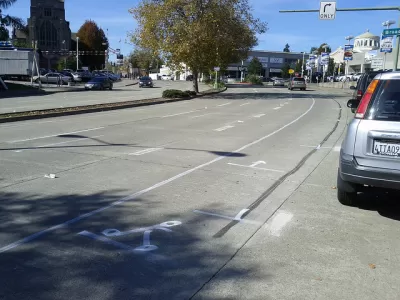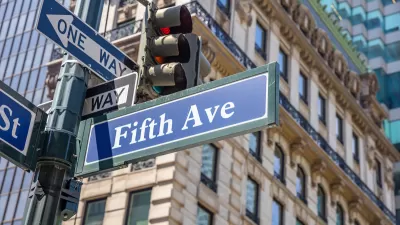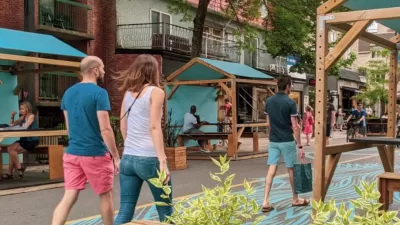The tragedy on Livingston Avenue could have been avoided, but the city of New Brunswick's concern was with motorists—not pedestrians.

A new study finds that metro areas can reduce traffic crashes by 19 percent on busy arterial streets by imposing a road diet. A road diet reduces the number of lanes dedicated to car traffic, widening the space (and hence improving safety) for cyclists, pedestrians, and street parking. It is an antidote to the previously popular policy of widening arterial roads to accommodate increasing numbers of commuters.
"The original thinking held that wider roads meant better traffic flows, especially at rush-hour, but new lanes also attracted new traffic, and outside the peak periods you'd end up with lots of wasted road space," writes Eric Jaffe.
The case study is a cost-benefit analysis of Livingston Ave in New Brunswick, N.J., "an oversized arterial corridor accessing the center of the city." It comes on the heels of a traffic collision involving three students, who were seriously injured as a result. New Brunswick is home to Rutgers University, and the four-lane street has thousands of rush-hour commuters as well as many pedestrians. Drivers mostly ignore the 25 mph speed limit.
"What makes the situation in New Brunswick so much more regrettable is that city leaders knew about the safety hazards on Livingston Avenue but hesitated to change traffic patterns for fear of offending drivers," Jaffe laments.
Jaffe provides a nice graphic illustrating the simple and cheap road diet alterations proposed. According to the study, the costs are mostly political; research demonstrated that the level of service for drivers increased only modestly after a road diet. Jaffe finds: "All told, the traffic impacts amounted to two or three minutes of total delay and maybe one or two more minutes of travel time, depending on morning or evening rush hour and the precise configuration of the road diet[.]"
FULL STORY: The Benefits of Slower Traffic, Measured in Money and Lives

Planetizen Federal Action Tracker
A weekly monitor of how Trump’s orders and actions are impacting planners and planning in America.

Congressman Proposes Bill to Rename DC Metro “Trump Train”
The Make Autorail Great Again Act would withhold federal funding to the system until the Washington Metropolitan Area Transit Authority (WMATA), rebrands as the Washington Metropolitan Authority for Greater Access (WMAGA).

The Simple Legislative Tool Transforming Vacant Downtowns
In California, Michigan and Georgia, an easy win is bringing dollars — and delight — back to city centers.

The States Losing Rural Delivery Rooms at an Alarming Pace
In some states, as few as 9% of rural hospitals still deliver babies. As a result, rising pre-term births, no adequate pre-term care and "harrowing" close calls are a growing reality.

The Small South Asian Republic Going all in on EVs
Thanks to one simple policy change less than five years ago, 65% of new cars in this Himalayan country are now electric.

DC Backpedals on Bike Lane Protection, Swaps Barriers for Paint
Citing aesthetic concerns, the city is removing the concrete barriers and flexposts that once separated Arizona Avenue cyclists from motor vehicles.
Urban Design for Planners 1: Software Tools
This six-course series explores essential urban design concepts using open source software and equips planners with the tools they need to participate fully in the urban design process.
Planning for Universal Design
Learn the tools for implementing Universal Design in planning regulations.
Smith Gee Studio
City of Charlotte
City of Camden Redevelopment Agency
City of Astoria
Transportation Research & Education Center (TREC) at Portland State University
US High Speed Rail Association
City of Camden Redevelopment Agency
Municipality of Princeton (NJ)





























